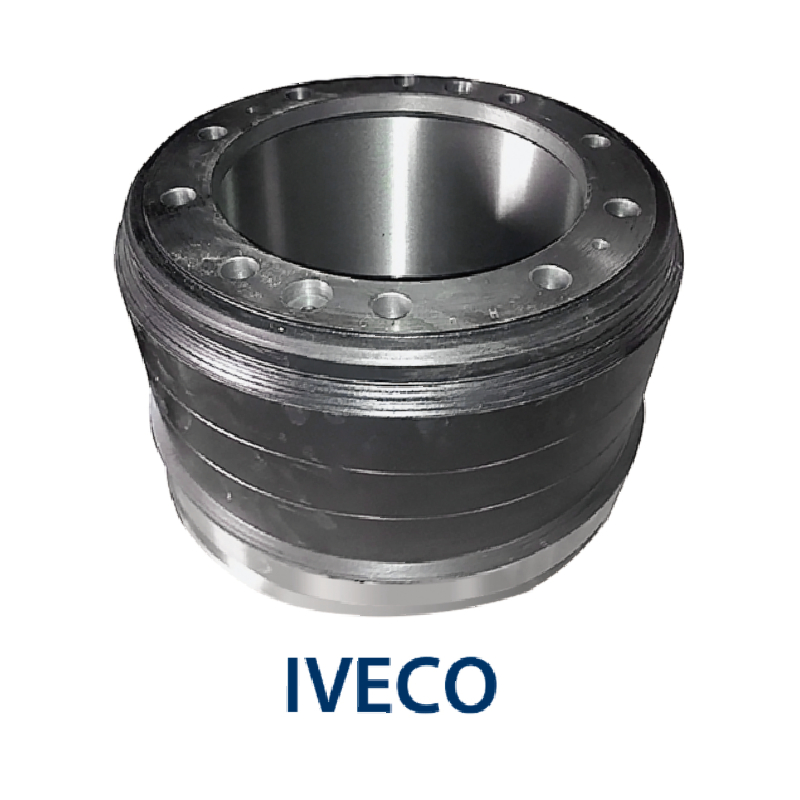Nov . 06, 2024 07:48 Back to list
Understanding the Functionality and Importance of Brake Drums in Vehicle Components
Understanding Brake Drums A Key Component of Vehicle Braking Systems
When it comes to vehicle safety and performance, the brakes are one of the most crucial systems. Among the various types of brake components, the brake drum plays a significant role, especially in older vehicles and certain modern designs. This article explores the structure, functionality, advantages, and challenges associated with brake drums.
What is a Brake Drum?
A brake drum is a cylindrical component that houses the brake shoes in a drum brake system. Typically made from cast iron or aluminum, the brake drum rotates with the wheel. When the brakes are applied, brake shoes inside the drum are pushed against the inner surface of the drum, creating friction that slows and ultimately stops the vehicle.
How Brake Drums Work
Brake drums are part of a closed system. The primary elements include the brake pedal, brake master cylinder, brake lines, and finally, the brake drum and shoes. When the driver presses the brake pedal, hydraulic fluid is pushed from the master cylinder through the brake lines to the brake assembly at each wheel.
The hydraulic pressure forces the brake shoes outward against the drum's inner surface. The friction generated between the shoes and the drum slows the wheel's rotation, allowing the vehicle to decelerate. This simple yet effective design has made brake drums a reliable choice for many vehicles.
Advantages of Brake Drums
1. Cost-Effectiveness Brake drums are generally less expensive to manufacture and replace than disc brakes. This makes them a popular choice for budget-conscious vehicle owners and manufacturers.
2. Robustness Brake drums are known for their ability to withstand high temperatures and wear. Their sturdy construction allows them to perform well under various conditions.
vehicle components brake drum

3. Self-Adjusting Feature Many drum brake systems include a self-adjusting mechanism. As the brake shoes wear down, the mechanism ensures that they remain in contact with the drum for optimal performance, reducing the need for frequent manual adjustments.
4. Effective for Heavy Loads Drum brakes provide superior stopping power and are often utilized in heavy-duty vehicles like trucks and buses. Their design allows for greater friction surface area, making them effective for managing the additional weight.
Challenges of Brake Drums
Despite their advantages, brake drums have some drawbacks. One of the most significant challenges is heat dissipation. When brakes are applied repeatedly, especially in situations such as descending steep hills, the brake drums can become overheated. This phenomenon, known as brake fade, can lead to decreased braking performance and even failure.
Additionally, brake drums are typically heavier than disc brakes, which can contribute to overall vehicle weight and potentially impact fuel efficiency. Maintenance can also be more complex; if the brake shoes need replacement, the entire drum assembly may need disassembly.
Trends and Innovations
Recently, there has been a trend towards replacing traditional drum brakes with disc brakes on many new vehicles. This shift is due in part to advancements in brake technology that have made disc brakes lighter and more effective at dissipating heat. However, brake drums still have a place in the industry, particularly in applications requiring durability and cost-effectiveness.
Manufacturers are also exploring new materials and designs for brake drums to enhance their performance. Innovations like ventilated drum designs, which improve airflow and heat dissipation, may help address some of the traditional challenges associated with drum brakes.
Conclusion
Brake drums are an integral component of many vehicle braking systems, offering a balance of durability and affordability. While advancements in brake technology may shift the focus towards disc brakes, the reliability and effectiveness of brake drums cannot be overlooked. Understanding the characteristics and roles of brake drums can empower vehicle owners to make informed decisions regarding their vehicle maintenance and safety. In a world where vehicle safety is paramount, the role of every component, including brake drums, becomes critical in ensuring smooth and safe driving experiences.
-
Scania Brake Drums: OEM Quality for Optimal Safety & Durability
NewsAug.16,2025
-
R.V.I: Advanced Remote Visual Inspection for Precision
NewsAug.15,2025
-
Discover HYUNDA: Innovative Vehicles, Equipment & Solutions
NewsAug.14,2025
-
R.V.I: Unlock Advanced Insights & Real-time Performance
NewsAug.13,2025
-
Kamaz Brake Drum: Durable & Reliable for Heavy Duty Trucks
NewsAug.12,2025
-
Heavy Duty Iveco Brake Drum - Premium Quality & Safety
NewsAug.11,2025
